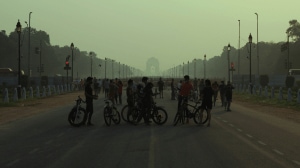Govt schools top bribery charts, reveals survey
Contrary to perception, it is Government schools which cater to more than 70 per cent of India’s schoolchildren and not public schools ...

Contrary to perception, it is Government schools which cater to more than 70 per cent of India’s schoolchildren and not public schools that top the bribe charts.
This has been revealed in the detailed report on corruption in the education sector released by Transparency International. The overall India report points out that the education sector alone accounts for corruption amounting to Rs 4,137 crore.
Naveen Surapaneni of the Centre for Media Studies (CMS) which carried out the study says: ‘‘Interestingly, the quantum of corruption in education is equal to what the Government is trying to raise (about Rs 5,000 crore) through the two per cent education cess.’’
The focus of the study is on the bribes parents need to pay for their children’s education up to Class XII.
The report on corruption in education shows that 1.5 crore households (or 18 per cent of the households) who have interacted with educational institutions claim to have paid bribes amounting to Rs 4,137 crore.
Bribe-giving is more widespread in rural areas comprising 1.1 crore households than urban localities (0.4 crore households). More than 77 per cent of the rural population is dependent on government schools.
Corruption tends to be higher in states with low educational development; Delhi’s educational development is comparatively higher.
Respondents say bribes need to be paid most often for obtaining important documents like school-leaving certificates and merit certificates.
Each year, schools ask parents to pay for enhancing educational programmes, maintaining school buildings and obtaining equipment/ supplies. Parents tend to comply fearing their child will suffer if they refuse.
The survey found 33 per cent of the bribes involved additional school fees, 28 per cent related to the issue of certificates and 26 per cent was admission-related.
‘‘The sad part of this is that the sufferers are those who don’t have access to and cannot afford public school education,’’ Surapaneni says.
The report also highlights problems in the education sector such as teacher absenteeism, private tuitions and poor quality of mid-day meals.






- 01
- 02
- 03
- 04
- 05

























